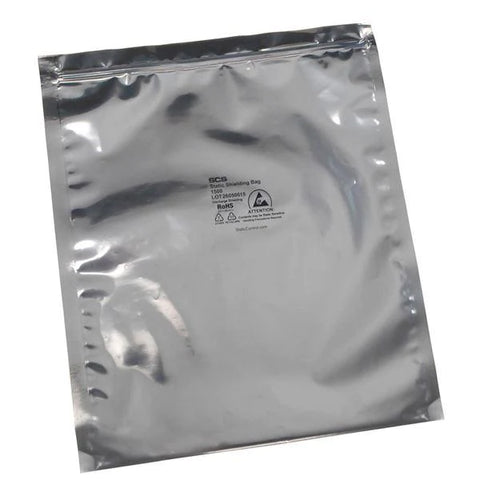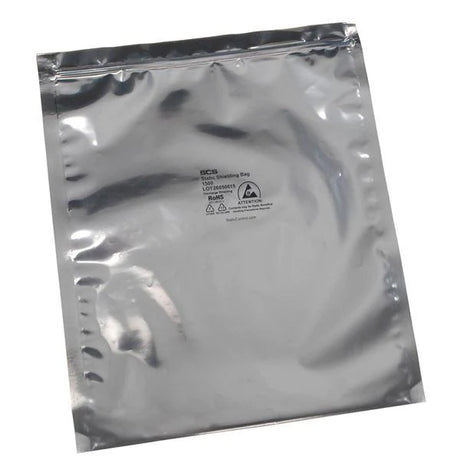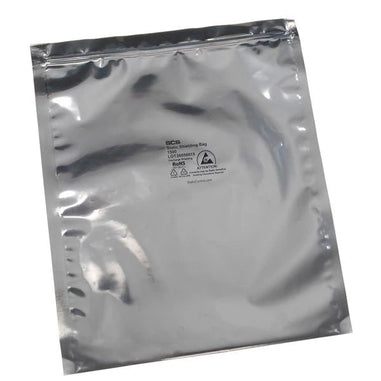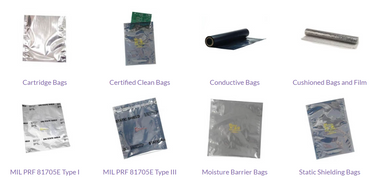- No products in the cart.
Electrostatic discharge (ESD) poses a significant threat to sensitive electronic components during manufacturing, handling, and transportation. ESD bags, also known as anti-static bags or shielding bags, are widely used to protect electronic devices from harmful static charges. In this blog post, we will explore the best practices for ESD bag handling and usage in electronics manufacturing. By following these guidelines, you can minimize the risk of ESD damage and ensure the integrity and reliability of electronic components throughout the production process.
What is ESD?
Electrostatic discharge (ESD) is the sudden flow of electricity between two objects that are at different electrical potentials. This can happen when two objects come into contact with each other, or when they are separated by a small distance.
ESD can damage sensitive electronic components. This is because the sudden flow of electricity can create a surge of current that can overload the components.
How to Prevent ESD Damage
There are a number of ways to prevent ESD damage. One way is to use ESD bags. ESD bags are made of a material that is designed to dissipate ESD, preventing it from building up on the components.
Another way to prevent ESD damage is to ground yourself before handling sensitive components. This can be done by touching a grounded object, such as a table or a workbench.
It is also important to wear ESD-safe clothing and footwear when handling sensitive components. ESD-safe clothing and footwear are designed to prevent ESD from building up on your body.
Best Practices for ESD Bag Handling and Usage
Here are some best practices for ESD bag handling and usage:
-
Choose the Right ESD Bags
Selecting the appropriate ESD bags is crucial for effective protection against electrostatic discharge. Look for bags that comply with industry standards, such as ANSI/ESD S541 or IEC 61340-5-1, and ensure they have a proper static shielding or dissipative properties. Consider the requirements of your specific application, such as size, closure mechanisms (zipper or adhesive), and transparency for easy component identification.
-
Proper Bag Handling Procedures
When handling ESD bags, it is important to follow proper procedures to maintain their effectiveness. Avoid touching the inside of the bag to prevent transferring static charges from your hands. Instead, grasp the bag by its non-conductive areas, such as the edges or outside surfaces. Minimize movement and friction that can generate static charges by handling the bags in a controlled environment with appropriate flooring and humidity levels.
-
Check Bag Integrity
Regularly inspect ESD bags for any signs of damage or wear. Look for punctures, tears, or weak spots that can compromise their shielding effectiveness. Damaged bags should be immediately replaced to ensure the continued protection of electronic components. Implement an inspection and replacement schedule to ensure that ESD bags are in optimal condition at all times.
-
Proper Component Placement
When placing electronic components inside ESD bags, ensure proper positioning and orientation. Avoid stacking components directly on top of each other, as it can create friction and generate static charges. Utilize compartmentalized or properly designed ESD bags to organize and separate individual components, preventing direct contact and reducing the risk of damage during handling and transportation.
-
Eliminate Moisture and Contaminants
Before placing electronic components in ESD bags, ensure they are free from moisture and contaminants that can compromise their functionality. Moisture and foreign substances can increase the risk of ESD events and lead to component failures. Implement proper cleaning and drying procedures for components to eliminate moisture and adhere to cleanliness standards to prevent contamination.
-
Label and Document Bags
Properly label ESD bags with essential information, including part numbers, lot codes, and handling instructions. Documenting this information allows for easy identification and traceability throughout the manufacturing process. Maintain clear records of bag usage, inspection dates, and replacement cycles to ensure accountability and compliance with quality control requirements.
-
ESD Bag Storage and Transportation
Store and transport ESD bags in a controlled environment to maintain their shielding properties. Avoid exposing bags to high humidity, extreme temperatures, or direct sunlight, as these conditions can affect their effectiveness. Use ESD-safe containers or cabinets for storage and consider additional protective measures, such as humidity control or desiccants, to minimize moisture-related risks.
-
ESD Bag Disposal
Proper disposal of used or damaged ESD bags is essential to prevent their reuse and potential ESD hazards. Clearly label and separate disposed bags from reusable ones to avoid any confusion. Follow local regulations and guidelines for the safe disposal of ESD bags to ensure environmental compliance.
Conclusion
Implementing best practices for ESD bag handling and usage is crucial in electronics manufacturing to protect sensitive components from electrostatic discharge. By choosing the right ESD bags, following proper handling procedures, inspecting bags for integrity, ensuring proper component placement, eliminating moisture and contaminants, labeling and documenting bags, storing and transporting bags appropriately, and disposing of used bags safely, you can significantly reduce the risk of ESD damage and maintain the integrity and reliability of electronic components throughout the manufacturing process. Incorporate these best practices into your operations to create a robust ESD control program and safeguard the quality of your electronic products.
For over 40 years, Lab Pro Inc. has been committed to delivering the highest quality ESD products and ESD surveys, lab supplies, lab equipment, reagents, Excelta tweezers and cutters distance learning kits, and cleanroom PPE apparel. Renowned by global medical device companies and laboratories, we ensure exceptional quality in every product. Contact us online or call 888-452-2776 to learn more. Discover top-notch lab supplies and elevate your experiments today!












































